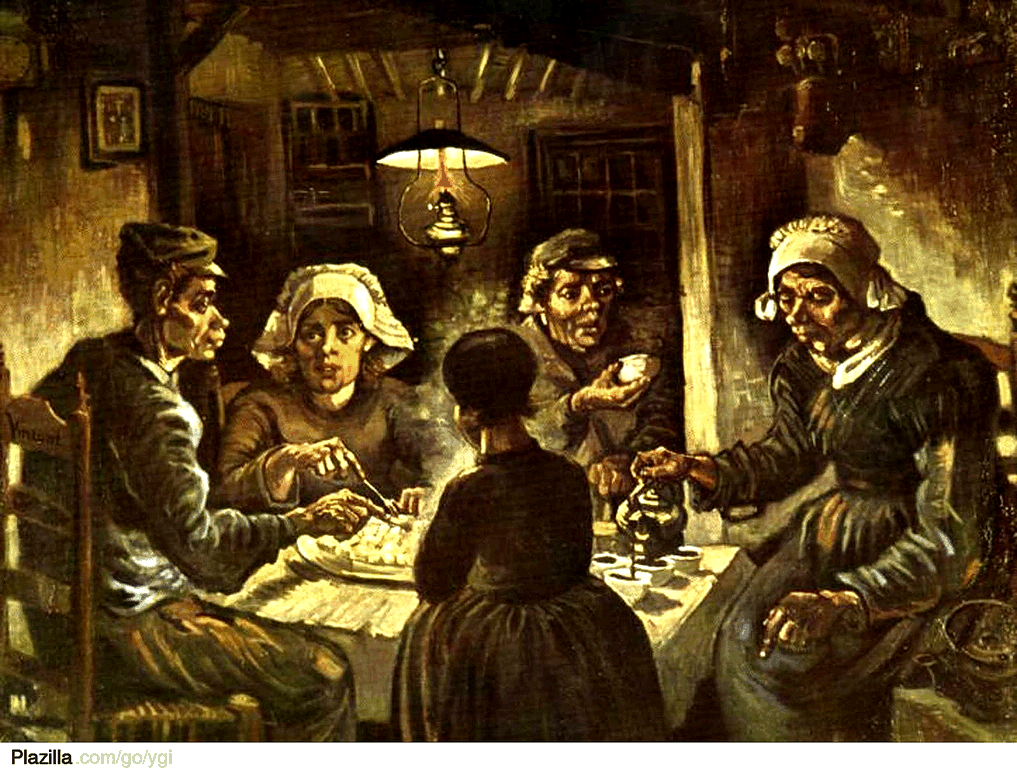Speaking Like Only Colours Do

If there is one artist in the history of art world who has left the longest and most cherished mark on the subsequent many generations of artists and humankind, undoubtedly it is none other than Vincent Van Gogh. In a tribute befitting to the spirit of Van Gogh himself, Loving Vincent brings alive parts of Gogh’s life on the silver screen through multitude of oil paintings, all animated in perfect sync with one-another. Loving Vincent is the world’s first fully painted film.
Loving Vincent starts with a scene from Starry Night coming down to the Café Terrace, also a painting that he painted in Arles in 1888 in a soft, dewy manner with its characters having the perfect expressions and changing colours in order to provide depth.
The very idea of having a film, frame by frame in oil paintings, and those paintings being painted, one brush stroke at a time on the screen, can be baffling for most of the creative workers, both painters and artists working to create magic. But the end result is breath-taking to say the least. As per the cinematographer, Tristan Oliver, in this guardian piece, the entire script was shot in live action in 14 days, on partial sets and in front of green screens at 3 Mills Studios in London. The footage was then given to a team of over 50 painters in Gdansk, who meticulously turned each frame into individual painting. By the end, the team had produced 65,000 frames in oil paint covering more than 850 canvasses.
This is an act of true love for someone as remarkable and endearing as Van Gogh, someone who longed for artistic recognition all his life. And even in the grave absence of it, kept painting day in and day out. In modern day art, when brush strokes have taken the place of multiple clicks on computer screens, this is a landmark attempt in the very way we are going to watch cinema.
Loving Vincent takes a simple errand of delivering Van Gogh’s last letter to his brother Theo and turns it into a plot where the postman’s son, Armand Roulin follows a memorial and investigative journey into the circumstances of his death. In an attempt to find out about his death, Armand becomes truly inquisitive about the personhood of Gogh. He takes us to the incident when Van Gogh feels delighted at the mere sight of the crow. In a world that is essentially trying to fit human beings in boxes, the loneliness of an artist is not overrated to say the least. However, through its own making, the film is asking the viewers to think and feel differently. The book, “Lust for Life”, a biographical novel written by Irving Stone on Gogh’s life takes this feeling to its depth and provides an insight into his life. Following passage describes it,
“First, we think all truth is beautiful, no matter how hideous its face may seem. We accept all of nature, without any repudiation. We believe there is more beauty in a harsh truth than in a pretty lie, more poetry in earthiness than in all the salons of Paris. We think pain is good because it is the most profound of all human feelings. We think sex is beautiful even when portrayed by a harlot and a pimp. We put character above ugliness, pain above prettiness and hard, crude reality above all the wealth in France. We accept life in its entirety without making moral judgments. We think the prostitute is as good as the countess, the concierge as good as the general, the peasant as good as the cabinet minister, for they all fit into the pattern of nature and are woven into the design of life!”
― Irving Stone, Lust for Life
The film, introduces this side of Van Gogh through his lesser known paintings and sketches. In a truly visually delightful journey, with the stars twinkling brighter than can be ever captured through camera and reflections appearing clearer in water than photographs, the film asks the viewers to explore that, that can’t be worded, only imagined and painted. It compels the viewers to feel a degree of compassion that is otherwise missing in today’s societies, by simple and yet grand gestures, like Gogh killing himself as he comes to know about the misery of Theo through Doctor Gachet.
A lot has been said since about Van Gogh’s life. But the film makes the audience grieve for the true loss that artists still feel by Van Gogh’s premature death, only if it can be called such!
However, in asking the question, “You want to know so much about his death, but what do you know about his life?” the film contradicts itself. Though it captures the philosophical essence of his death, it could have shed more light on the life that Van Gogh was, haunted by the demons of a ‘regular life’ and yet compassionately and continuously painting the sufferings of the working people, the regular ones, the ordinary ones. That being said, the film demands to be watched, may be multiple times over to grasp its full essence.
Loving Vincent is a riot of colours!
